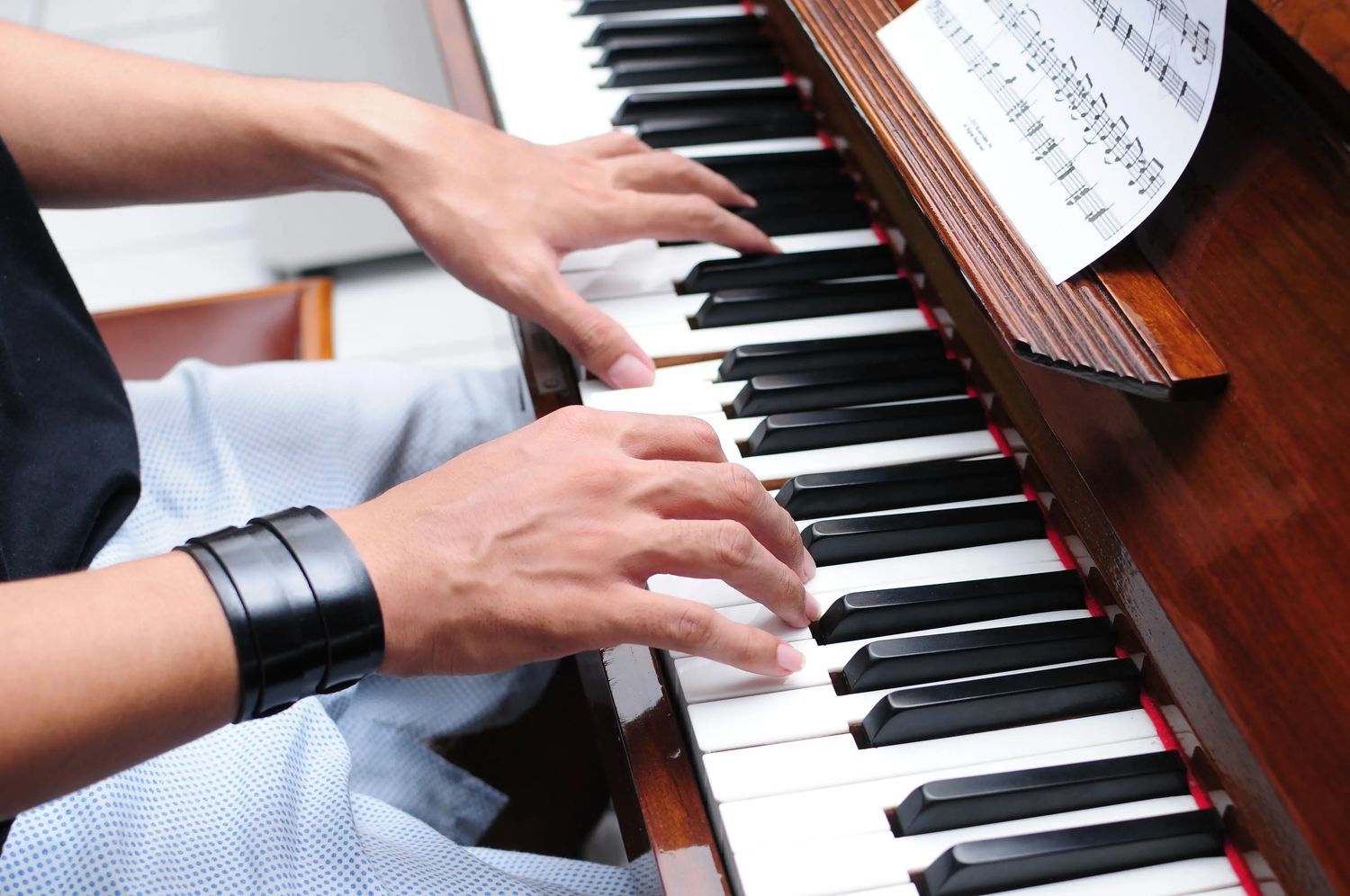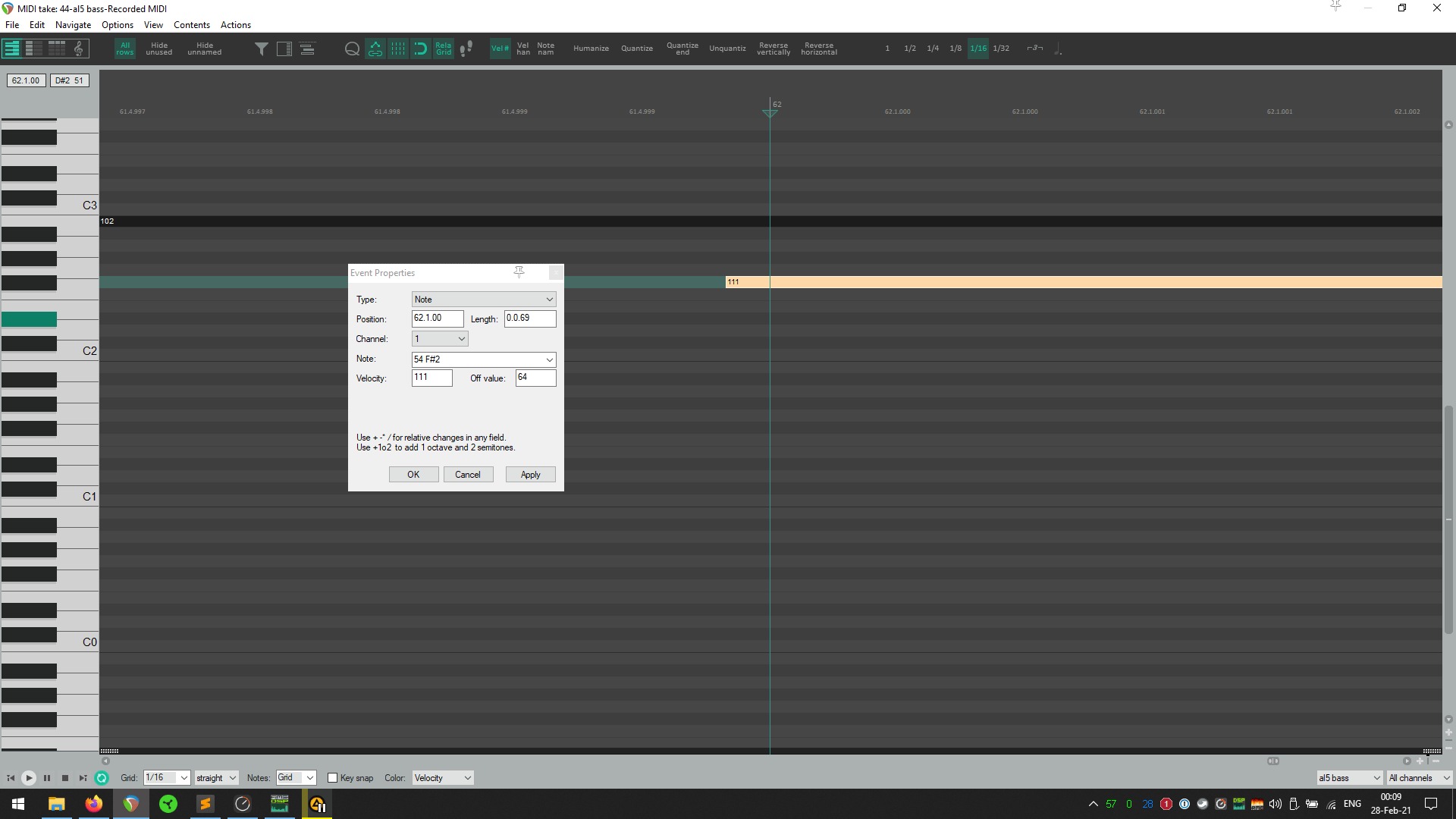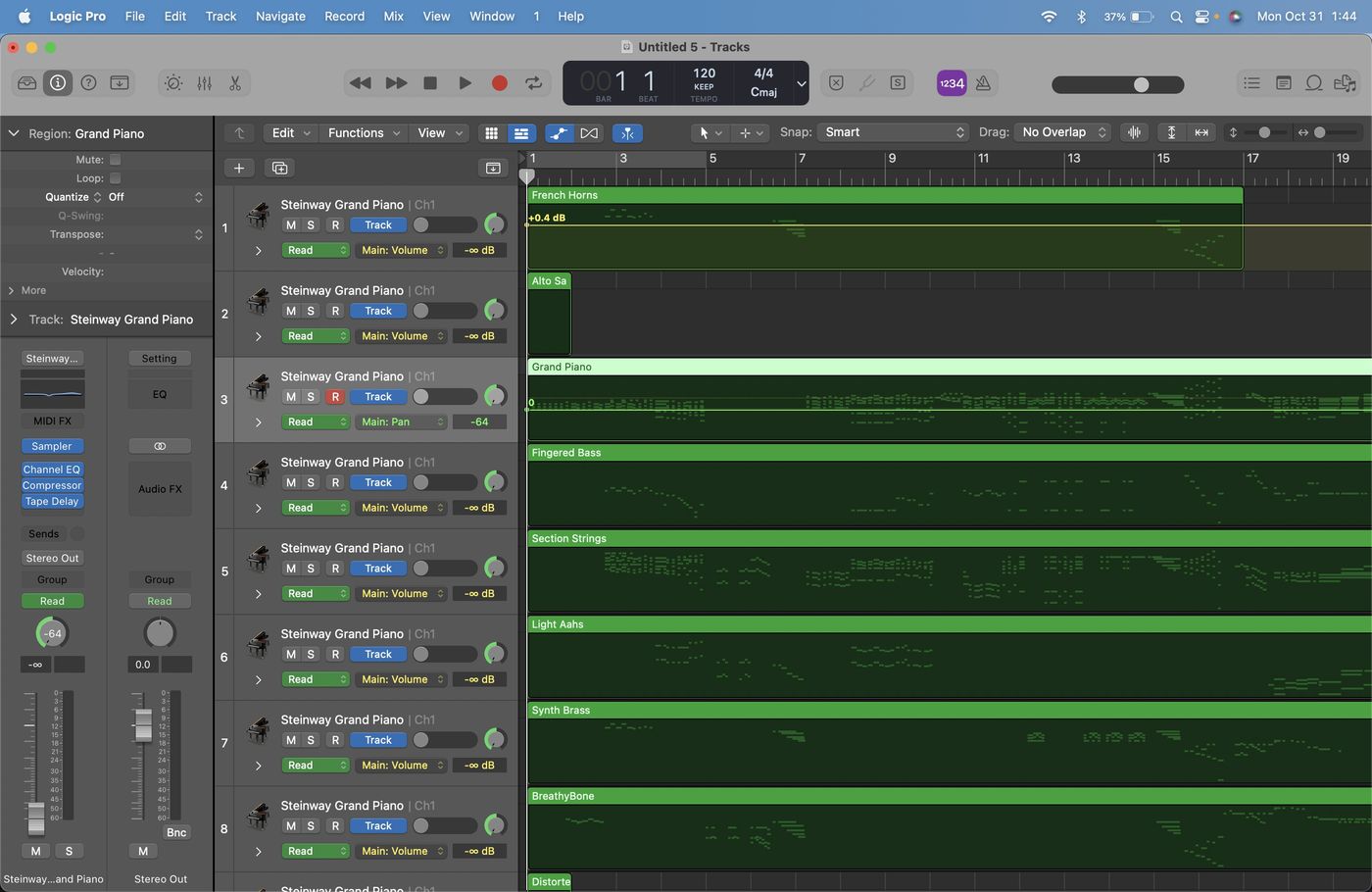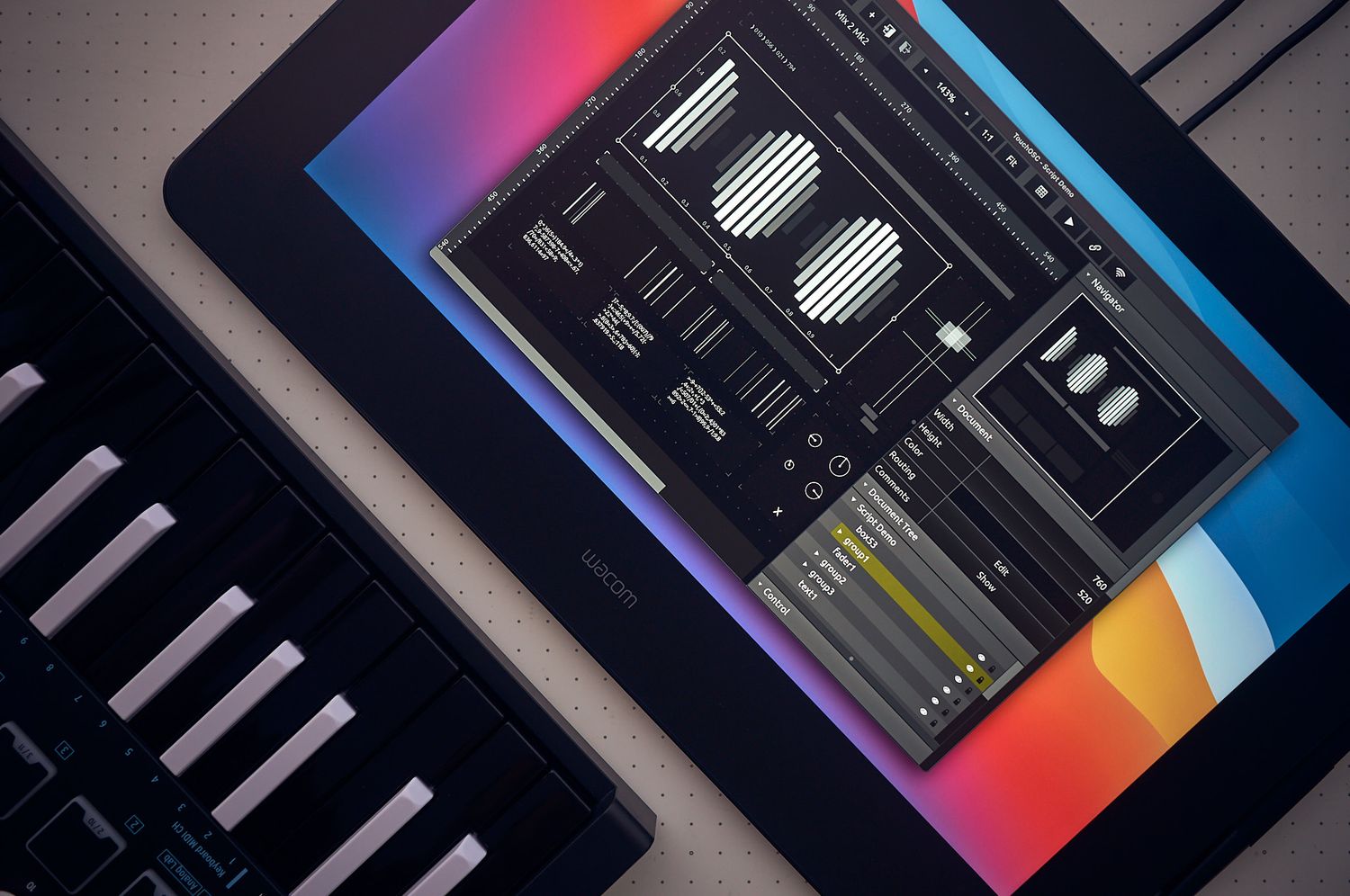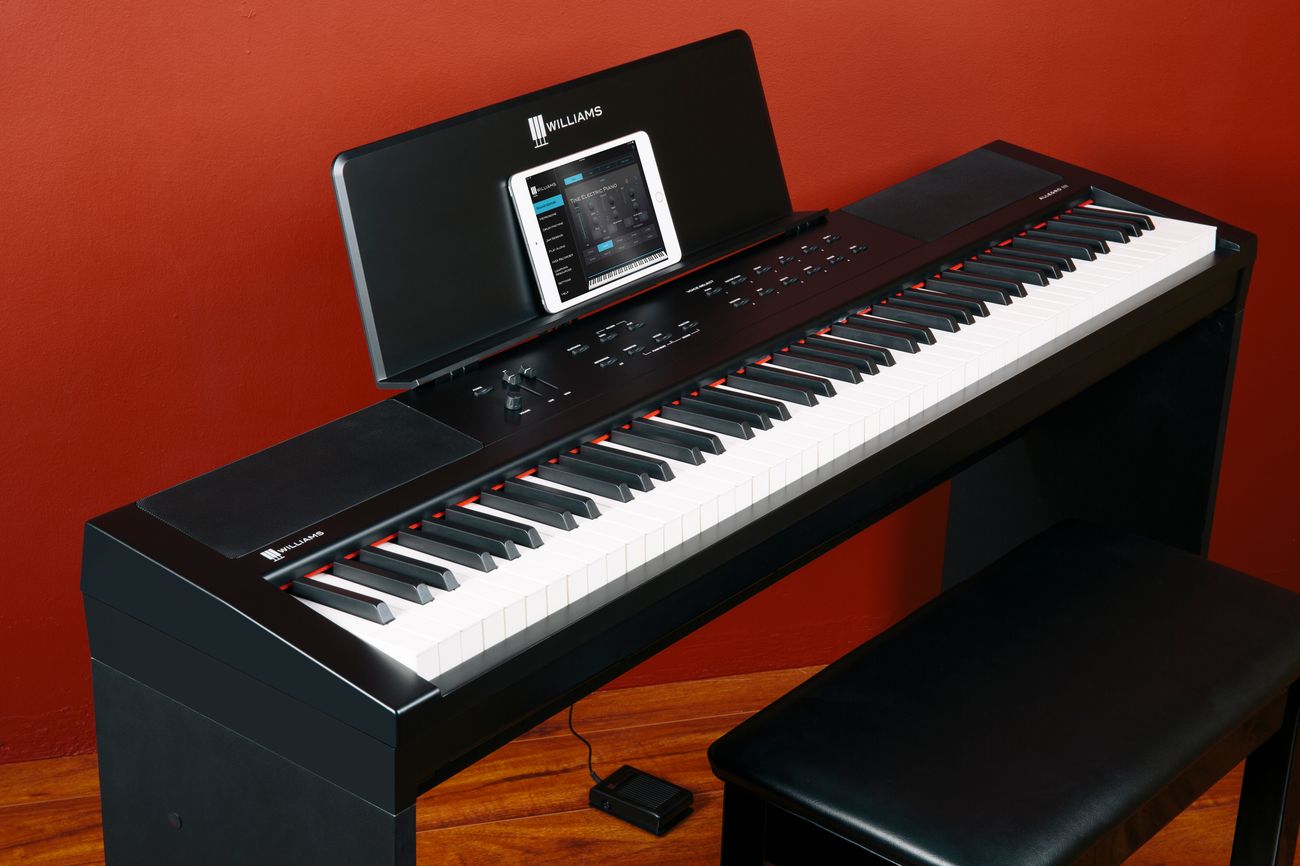Home>Production & Technology>MIDI>How To Make Music With MIDI Piano


MIDI
How To Make Music With MIDI Piano
Modified: February 22, 2024
Learn how to create music using MIDI piano and unleash your creativity. Discover the power of MIDI technology for composing and producing music.
(Many of the links in this article redirect to a specific reviewed product. Your purchase of these products through affiliate links helps to generate commission for AudioLover.com, at no extra cost. Learn more)
Table of Contents
Introduction
Music has the power to evoke emotions, tell stories, and inspire creativity. Whether you're a seasoned musician or an aspiring artist, the world of MIDI (Musical Instrument Digital Interface) piano opens up a realm of possibilities for creating and producing music. With its versatility and convenience, MIDI piano has become an essential tool for music enthusiasts, producers, and composers alike.
In this article, we will delve into the exciting realm of MIDI piano, exploring its capabilities, and providing valuable insights into how you can harness its potential to craft captivating melodies and compositions. From understanding the fundamentals of MIDI piano to mastering the art of music production, this guide will equip you with the knowledge and skills to embark on a musical journey like no other.
Whether you're drawn to the expressive melodies of classical piano or the infectious rhythms of contemporary genres, MIDI piano offers a dynamic platform to unleash your musical prowess. By leveraging the seamless integration of technology and artistry, you can compose, arrange, and produce music with unparalleled precision and creativity.
Join us as we embark on a captivating exploration of MIDI piano, where the boundless realm of musical expression awaits. Let's unlock the secrets of MIDI piano and discover the endless possibilities it holds for crafting mesmerizing compositions and bringing your musical visions to life.
With MIDI piano as your creative companion, the canvas of musical innovation is yours to explore. Let's embark on this exhilarating journey, where the harmonious blend of technology and musical artistry awaits.
What is MIDI Piano?
MIDI, which stands for Musical Instrument Digital Interface, revolutionized the music industry by introducing a universal language for electronic musical instruments to communicate with each other. In the context of a piano, MIDI technology enables the instrument to generate and transmit digital signals that represent the notes, dynamics, and other musical nuances produced during a performance. These digital signals can then be captured, recorded, and manipulated by a wide array of compatible devices and software.
A MIDI piano, also known as a digital piano with MIDI capabilities, is equipped with the necessary hardware and software to interact with MIDI technology. Unlike traditional acoustic pianos, MIDI pianos are designed to interface with computers, synthesizers, and other MIDI-compatible devices, allowing for seamless integration into modern music production workflows.
One of the key benefits of MIDI piano is its ability to capture and transmit a wealth of musical data with remarkable precision. Every key press, pedal movement, and dynamic expression is translated into digital information, enabling musicians and producers to capture the subtleties of their performances with unparalleled accuracy.
Moreover, MIDI piano empowers musicians to harness the full potential of digital audio workstations (DAWs) and music production software. By connecting a MIDI piano to a computer or mobile device, artists can leverage a diverse range of software instruments, virtual effects, and recording capabilities to craft intricate compositions and arrangements.
Furthermore, MIDI piano serves as a versatile tool for music education and practice. With its ability to facilitate interactive learning experiences and provide instant feedback, MIDI pianos have become invaluable resources for students and educators seeking innovative ways to engage with music theory, technique, and performance.
In essence, MIDI piano represents a convergence of traditional musical artistry and cutting-edge technology, offering a gateway to boundless creative possibilities. Whether used for live performances, studio recordings, or educational purposes, MIDI piano stands as a testament to the transformative impact of digital innovation on the world of music.
As we continue our exploration of MIDI piano, we will uncover the intricacies of selecting the right MIDI piano, setting it up for optimal performance, and utilizing MIDI software to unleash the full potential of this remarkable instrument. Embrace the journey ahead, as we embark on a captivating odyssey through the realm of MIDI piano and its profound impact on the art of music creation and performance.
Choosing the Right MIDI Piano
Selecting the perfect MIDI piano is a pivotal decision that can significantly influence your musical journey. With a myriad of options available, it's essential to consider various factors to ensure that the chosen instrument aligns with your artistic vision and technical requirements.
Consider Your Musical Objectives
Before delving into the diverse array of MIDI pianos, take a moment to reflect on your musical aspirations and the specific role the instrument will play in your creative endeavors. Whether you seek a MIDI piano for live performances, studio recordings, or educational purposes, clarifying your objectives will guide your decision-making process.
Evaluate Key Features
When evaluating MIDI pianos, pay close attention to key features such as key action, touch sensitivity, and polyphony. The key action refers to the mechanism by which the keys respond to touch, offering variations ranging from weighted hammer action to semi-weighted and synth-action keys. Touch sensitivity determines the piano's responsiveness to dynamics, allowing for nuanced expression in your performances. Additionally, polyphony, which denotes the number of simultaneous notes a piano can produce, is a crucial consideration, especially for complex compositions and arrangements.
Explore Connectivity Options
As you explore MIDI piano options, consider the connectivity features that align with your workflow. Look for instruments equipped with USB, MIDI, and audio outputs to ensure seamless integration with your computer, audio interface, or external sound modules. Additionally, some MIDI pianos offer Bluetooth connectivity, providing wireless convenience for connecting to mobile devices and computers.
Test Sound Quality and Instrument Selection
The sonic characteristics of a MIDI piano play a pivotal role in shaping your musical output. Prioritize instruments that offer high-quality sampled sounds, encompassing a diverse range of acoustic and electric piano tones, as well as additional instrument voices such as strings, organs, and synths. Conduct thorough sound evaluations to ensure that the piano's tonal palette resonates with your artistic sensibilities.
Consider Portability and Ergonomics
For musicians on the move or those with limited space, the portability and ergonomic design of a MIDI piano are crucial factors. Compact and lightweight options with intuitive control interfaces can enhance convenience without compromising on performance and sound quality.
Seek User-Friendly Interfaces
An intuitive and user-friendly interface can streamline your creative process, allowing for seamless navigation of settings, sound selection, and recording functionalities. Look for MIDI pianos with clear and accessible controls, intuitive displays, and ergonomic design elements that facilitate effortless interaction with the instrument.
By carefully considering these factors and aligning them with your musical aspirations, you can make an informed decision when choosing the right MIDI piano. Whether you prioritize expressive key action, versatile connectivity, or immersive sound quality, the perfect MIDI piano awaits to elevate your musical endeavors to new heights.
Setting Up Your MIDI Piano
Setting up your MIDI piano is a pivotal step that lays the foundation for seamless integration into your musical workflow. Whether you're preparing for a captivating live performance or embarking on a creative studio session, optimizing the setup of your MIDI piano ensures that you can unleash its full potential with ease and efficiency.
Establishing Physical Connections
Begin by establishing the physical connections between your MIDI piano and external devices. If your MIDI piano features USB connectivity, connect it to your computer using a USB cable. Alternatively, if your MIDI piano utilizes traditional MIDI connectors, ensure that you have the necessary MIDI cables to establish a connection with your computer or audio interface.
Configuring MIDI Settings
Once the physical connections are in place, proceed to configure the MIDI settings on your computer or digital audio workstation (DAW). Access the MIDI settings within your software and designate your MIDI piano as the input device. This step ensures that the MIDI signals generated by your piano are recognized and processed by the software, enabling seamless communication between the two entities.
Testing MIDI Communication
After configuring the MIDI settings, it's essential to verify the communication between your MIDI piano and the connected device. Play a few notes on the piano and observe the corresponding MIDI input indicators within your software. If the software registers the MIDI input from your piano, you have successfully established a functional MIDI connection.
Exploring MIDI Mapping and Assignments
Delve into the realm of MIDI mapping and assignments to customize the behavior of your MIDI piano within your software environment. This process involves assigning specific MIDI functions to various parameters within your software, such as controlling virtual instrument parameters, triggering effects, or adjusting mixer settings. By mapping MIDI controls to your desired functions, you can tailor the behavior of your MIDI piano to align with your creative preferences and workflow.
Optimizing Audio Routing
In scenarios where your MIDI piano generates audio output, optimize the audio routing to ensure that the sound is channeled through your desired audio interface or monitoring system. Configure the audio settings within your software to route the audio output from your MIDI piano to the designated playback devices, providing a cohesive audio experience during your musical endeavors.
By meticulously attending to the setup of your MIDI piano, you pave the way for a harmonious convergence of musical expression and technological innovation. With the physical connections established, MIDI settings configured, and audio routing optimized, your MIDI piano stands ready to serve as a catalyst for boundless creativity and musical exploration.
Using MIDI Software
Harnessing the full potential of a MIDI piano involves leveraging the capabilities of MIDI software to elevate your musical creations. Whether you're delving into the realm of music production, composition, or performance, MIDI software serves as a versatile toolkit for shaping and refining your musical ideas.
Exploring Digital Audio Workstations (DAWs)
Digital Audio Workstations, commonly known as DAWs, stand as the central hub for integrating MIDI piano into your creative process. These software platforms offer a rich array of features, including MIDI sequencing, audio recording, virtual instrument hosting, and comprehensive mixing and editing capabilities. Popular DAWs such as Ableton Live, Logic Pro, and FL Studio provide intuitive interfaces and robust functionality, empowering musicians to craft intricate compositions and arrangements with precision and finesse.
Utilizing Virtual Instruments and Sound Libraries
MIDI software unlocks a treasure trove of virtual instruments and sound libraries, enriching your sonic palette with an expansive array of musical textures and timbres. From lifelike piano emulations to orchestral ensembles, synthesizers, and exotic world instruments, the realm of virtual instruments offers boundless creative possibilities. By integrating these virtual instruments into your MIDI software environment, you can orchestrate lush arrangements, experiment with diverse sonic textures, and breathe life into your musical visions with unprecedented depth and authenticity.
Embracing MIDI Effects and Processing
MIDI software empowers musicians to sculpt and manipulate MIDI data with precision, courtesy of a diverse range of MIDI effects and processing tools. From arpeggiators and chord generators to intricate MIDI quantization and humanization features, these tools enable you to infuse your performances with expressive nuances and intricate rhythmic patterns. Furthermore, MIDI processing capabilities allow for seamless editing and refinement of MIDI data, fostering a dynamic environment for musical exploration and experimentation.
Integrating External Hardware and Controllers
In addition to its software-centric capabilities, MIDI software facilitates seamless integration with external hardware and controllers, expanding the horizons of musical expression. Whether connecting external synthesizers, drum machines, or MIDI controllers, the interoperability of MIDI software enables artists to harness the collective potential of diverse musical tools, fostering a holistic approach to music creation and performance.
Enabling Seamless Collaboration and Workflow Efficiency
MIDI software serves as a catalyst for collaborative endeavors, enabling musicians to share and collaborate on projects with unprecedented ease. By leveraging cloud-based collaboration features and project sharing functionalities, MIDI software fosters a cohesive environment for creative exchange and collective innovation. Furthermore, streamlined workflow efficiencies, including project organization, automation, and customizable templates, empower artists to focus on the art of music creation without being encumbered by technical complexities.
In essence, MIDI software stands as a cornerstone of modern music production, offering a dynamic platform for realizing artistic visions and pushing the boundaries of musical expression. By embracing the multifaceted capabilities of MIDI software, musicians can embark on a transformative journey of sonic exploration and creative discovery, where the convergence of technology and artistry fuels an inexhaustible wellspring of musical innovation.
Creating Music with MIDI Piano
Embarking on the journey of creating music with a MIDI piano opens a realm of boundless creativity and artistic expression. Whether you're a seasoned composer, an aspiring songwriter, or a passionate performer, the versatility and precision of MIDI piano serve as a gateway to crafting captivating melodies and immersive compositions.
Embracing Expressive Performances
The inherent touch sensitivity and dynamic range of MIDI pianos enable musicians to infuse their performances with nuanced expressiveness. From delicate phrasing to thunderous fortissimo passages, the responsive nature of MIDI piano keys captures the subtleties of every musical gesture, allowing for emotive and evocative performances that resonate with profound authenticity.
Orchestrating Lush Arrangements
With MIDI piano as the cornerstone of your musical canvas, you can orchestrate lush arrangements that transcend traditional boundaries. By harnessing the expansive array of virtual instruments and sound libraries within MIDI software, you can weave intricate tapestries of sonic textures, from ethereal string ensembles to thundering percussive elements, breathing life into your compositions with unparalleled depth and richness.
Unleashing Creative Exploration
The boundless realm of MIDI piano encourages unbridled creative exploration, empowering musicians to transcend conventional musical paradigms and venture into uncharted territories of sonic innovation. Through the seamless integration of MIDI software and external controllers, artists can experiment with diverse musical genres, unconventional harmonies, and avant-garde soundscapes, fostering a culture of fearless creativity and artistic experimentation.
Capturing Inspirational Moments
MIDI piano serves as a faithful companion in capturing inspirational moments of musical brilliance. Whether improvising a soul-stirring melody or meticulously crafting a symphonic opus, the ability to effortlessly record, edit, and refine musical ideas within MIDI software ensures that no fleeting moment of inspiration is lost, allowing for the preservation and realization of musical visions with unwavering fidelity.
Fostering Collaborative Synergy
In an era of interconnected creativity, MIDI piano becomes a catalyst for collaborative synergy, fostering a culture of shared artistic vision and collective innovation. Through the seamless exchange of MIDI projects, real-time collaboration features, and cloud-based workflow integration, musicians can engage in collaborative endeavors that transcend geographical boundaries, uniting diverse talents in a harmonious tapestry of musical expression.
Embracing the Journey Ahead
As you embark on the exhilarating odyssey of creating music with MIDI piano, embrace the journey ahead with an open heart and a resolute spirit. Let the evocative melodies that emanate from your MIDI piano become a testament to the transformative power of music, transcending barriers and resonating with the hearts of audiences worldwide. With MIDI piano as your creative ally, the symphony of your artistic vision awaits its moment to unfold, enveloping the world in the timeless embrace of musical enchantment.
Tips for Making Music with MIDI Piano
-
Embrace Dynamic Expression: Utilize the full spectrum of touch sensitivity and dynamic range offered by MIDI piano to infuse your performances with emotive nuances. Experiment with varying key pressures and pedal techniques to convey a rich tapestry of emotions within your compositions.
-
Experiment with Sound Layering: Explore the depth of MIDI software by layering multiple instrument voices to create lush, multidimensional soundscapes. By blending piano tones with orchestral strings, ethereal pads, and rhythmic textures, you can craft compositions that resonate with captivating complexity.
-
Harness MIDI Effects Creatively: Delve into the realm of MIDI effects and processing to imbue your performances with distinctive character and flair. Experiment with arpeggiators, modulation effects, and intricate MIDI manipulations to sculpt captivating musical motifs and rhythmic patterns.
-
Explore Non-Traditional Sounds: Break free from conventional norms and experiment with non-traditional sounds and textures. From ambient soundscapes to experimental electronic elements, the versatility of MIDI piano and software empowers you to push the boundaries of sonic exploration.
-
Capture Spontaneous Inspiration: Keep your MIDI piano readily accessible to capture spontaneous bursts of inspiration. Whether it's a fleeting melody or a poignant chord progression, the ability to swiftly record and preserve these moments ensures that your creative impulses are immortalized.
-
Master the Art of MIDI Editing: Familiarize yourself with MIDI editing tools within your software to refine and polish your musical ideas. From precise note adjustments to intricate quantization and humanization techniques, MIDI editing empowers you to sculpt performances with meticulous precision.
-
Customize MIDI Controller Assignments: Tailor the behavior of external MIDI controllers to suit your performance preferences. Assign controller parameters to modulate expression, effects, and instrument parameters, allowing for intuitive and personalized control over your musical performances.
-
Embrace Collaborative Opportunities: Leverage the collaborative potential of MIDI piano to engage in musical partnerships and ensemble performances. Whether it's synchronizing MIDI projects across multiple devices or participating in live collaborative sessions, MIDI piano fosters a culture of shared creativity.
-
Seek Inspiration from Diverse Genres: Draw inspiration from a diverse range of musical genres and styles to enrich your creative palette. Whether it's classical elegance, jazz improvisation, or contemporary electronic influences, the fusion of diverse musical influences fuels innovative compositions.
-
Continuous Learning and Exploration: Embrace a mindset of continuous learning and exploration, delving into tutorials, online resources, and community forums to expand your proficiency with MIDI piano and software. The journey of musical discovery is an ongoing odyssey, ripe with opportunities for growth and artistic evolution.
By integrating these tips into your musical endeavors, you can unlock the full potential of MIDI piano as a catalyst for boundless creativity and artistic expression. Let the captivating allure of MIDI piano inspire you to embark on a transformative musical odyssey, where the convergence of technology and artistry fuels an inexhaustible wellspring of musical innovation.
Conclusion
In the realm of music creation and performance, the advent of MIDI piano has heralded a new era of artistic innovation and boundless creativity. As we conclude our exploration of MIDI piano and its profound impact on the world of music, it becomes evident that this remarkable instrument stands as a testament to the harmonious fusion of tradition and technology. From its expressive touch-sensitive keys to its seamless integration with MIDI software, the MIDI piano has become an indispensable tool for musicians, composers, and producers alike.
The journey through the intricacies of MIDI piano has unveiled a world of possibilities, where dynamic expression, orchestral grandeur, and sonic exploration converge to shape captivating musical narratives. Whether crafting emotive piano ballads, orchestrating cinematic soundscapes, or delving into experimental sonic frontiers, MIDI piano empowers artists to transcend conventional boundaries and embark on a transformative odyssey of musical discovery.
As we embrace the multifaceted capabilities of MIDI piano, we are reminded of its role as a catalyst for collaborative synergy, uniting musicians across the globe in a shared tapestry of creative expression. The seamless exchange of MIDI projects, the integration of external controllers, and the collaborative potential of MIDI software foster an environment where diverse talents converge, igniting a symphony of collective innovation and artistic camaraderie.
In the realm of musical education, MIDI piano stands as a beacon of interactive learning and immersive engagement. Its ability to provide instant feedback, facilitate interactive tutorials, and offer diverse learning resources enriches the educational landscape, empowering students and educators to embark on a journey of musical exploration and skill development.
As we bid farewell to this captivating exploration of MIDI piano, we carry with us the resounding echoes of its transformative impact on the art of music creation and performance. The expressive melodies, the intricate compositions, and the collaborative endeavors fostered by MIDI piano serve as a testament to the enduring allure of music and the boundless potential of technological innovation. With MIDI piano as our steadfast companion, we embark on a harmonious odyssey, where the symphony of creativity and the cadence of innovation converge to shape the timeless legacy of musical enchantment.
In the grand tapestry of musical expression, MIDI piano stands as a resounding testament to the enduring harmony between tradition and technology, igniting a symphony of boundless creativity and artistic innovation. As we bid adieu to this captivating exploration, the melodies of MIDI piano linger in our hearts, resonating with the timeless allure of musical enchantment and the transformative power of artistic expression.

